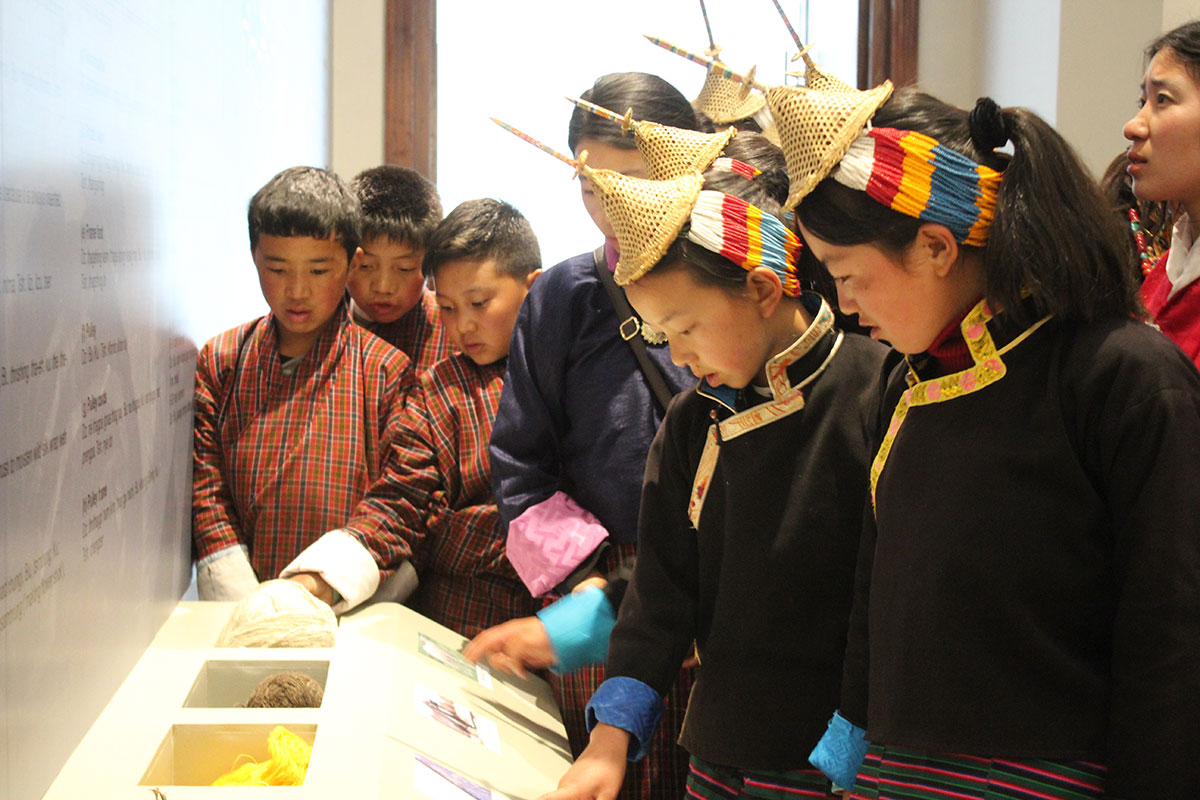Since 2018, the Center for Folklife and Cultural Heritage has engaged in collaborative projects with the Royal Textile Academy of Bhutan (RTA) to preserve and promote traditional Bhutanese textiles and sustain the country’s hand-loomed weaving traditions. At the beginning of the project, the organizations launched two comprehensive research studies to better understand the context for traditional weaving in the country. Although the COVID-19 pandemic and restrictions on international travel brought many in-person activities to a halt, Joseph Lo, the Center’s cultural heritage advisor for the project, worked virtually with the RTA team to analyze the results of the two surveys, examining youth attitudes toward and consumption trends for Bhutanese textiles.
Late last year, RTA published the final survey results in two reports: Youth Attitudinal Survey on Weaving Designing, and Textile Culture in Bhutan and Bhutan National Textiles Purchase and Consumption. Together, these reports provide an unprecedented look into the understanding of, appreciation, and demand for Bhutan’s hand-loomed textiles and provide insight on how the sector can be nurtured and sustained.
The consumption survey provides an evidence base that validates the recent work of policy makers and industry stakeholders in the country to sustain textile traditions. “Although hand-woven textiles in Bhutan echo quality and design excellence, other more economically priced textiles (such as machine-woven textiles and mesh-loom textiles) also have a place in the wardrobe of an average Bhutanese person,” noted Dasho Wangyal, ministry of home and cultural affairs secretary. Bhutanese textiles—both hand-woven and machine-made—are of vital importance to cultural identity.
The survey on youth attitudes (ages fifteen to twenty-four) highlights the continued importance of intergenerational knowledge transfer to build appreciation for traditional dress and textiles. Following global trends, youth expressed a stronger desire to learn and participate in the sector as designers, rather than learning the practice of weaving itself.

With the survey results in mind, RTA has created new opportunities for innovation and creativity in this space with the recent publication of the Theory of Colour. The booklet, written in both Dzongkha and English, brings a distinctive Bhutanese perspective to color theory principles. While aiming to enhance and expand the design skills of Bhutanese weavers, it also documents traditional color schemes of textiles, serving as a reference for future weavers and others interested in textile heritage.
“This is a significant milestone in RTA’s journey in fulfilling its directive as a center of learning, research and generation of new knowledge,” RTA director Rinzin Dorji shared. “The empirical data provided by the survey findings will give all of us the confidence, credibility, and conviction to carry out these tasks in fulfilling the potential and destiny of Bhutan’s hand-woven textile sector.”
About the Smithsonian Artisan Initiative
The Smithsonian Artisan Initiative is dedicated to building the sustainability of craft practices. The program brings together community-driven research and documentation, product design and development, enterprise training, and a suite of tools artisans can use to unlock access to markets.
About the Royal Textile of Bhutan
The mission of the Royal Textile Academy of Bhutan is dedicated to preserving, promoting, and educating about Bhutanese textiles. It aims to create awareness and encourage international collaboration to promote mutually beneficial exhibits and educational programs.


